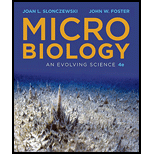
Concept explainers
To review:
The characteristics of the open reading frame.
Introduction:
The reading frame is defined as a deoxyribonucleotide acid (DNA) sequence having a grouping of three successive bases constituting the codons for the amino acid encoded by the DNA. The part of a reading frame that can be translated is defined as an open reading frame (ORF). It begins with a start codon and ends with a stop codon.
Explanation of Solution
Characteristics of the open reading frame areas follows:
1. An open reading frame is a sequence of DNA that is initiated with a start codon ATG (not every time) and terminates with three termination codons (TAA, TAG, TGA).
2. There are six possible ways (three on forward and three on the complementary strand) of translating any
3. By examining the open reading frame, it is also possible to predict the amino acid that is produced during translation. It is very important for gene prediction and is used to determine which amino acid is encoded by the gene.
4. ORFs can help in determining the sequence homology by having a comparison to known proteins in a process of annotation.
5. An ORF is the sequence with a length that is be divisible by three and is bounded by stop codons.
Want to see more full solutions like this?
Chapter 8 Solutions
Microbiology: An Evolving Science (Fourth Edition)
- 22. Which of the following mutant proteins is expected to have a dominant negative effect when over- expressed in normal cells? a. mutant PI3-kinase that lacks the SH2 domain but retains the kinase function b. mutant Grb2 protein that cannot bind to RTK c. mutant RTK that lacks the extracellular domain d. mutant PDK that has the PH domain but lost the kinase function e. all of the abovearrow_forwardWhat is the label ?arrow_forwardCan you described the image? Can you explain the question as well their answer and how to get to an answer to an problem like this?arrow_forward
- Describe the principle of homeostasis.arrow_forwardExplain how the hormones of the glands listed below travel around the body to target organs and tissues : Pituitary gland Hypothalamus Thyroid Parathyroid Adrenal Pineal Pancreas(islets of langerhans) Gonads (testes and ovaries) Placentaarrow_forwardWhat are the functions of the hormones produced in the glands listed below: Pituitary gland Hypothalamus Thyroid Parathyroid Adrenal Pineal Pancreas(islets of langerhans) Gonads (testes and ovaries) Placentaarrow_forward
 Principles Of Radiographic Imaging: An Art And A ...Health & NutritionISBN:9781337711067Author:Richard R. Carlton, Arlene M. Adler, Vesna BalacPublisher:Cengage Learning
Principles Of Radiographic Imaging: An Art And A ...Health & NutritionISBN:9781337711067Author:Richard R. Carlton, Arlene M. Adler, Vesna BalacPublisher:Cengage Learning





